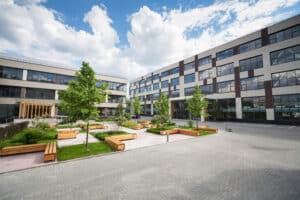
The dynamics of office space preferences have shifted dramatically in recent years, with business parks experiencing significant vacancies as companies prioritise city centre locations to accommodate their workforce’s evolving needs.
Despite initial expectations that business parks would gain popularity due to pandemic-induced concerns about public transport, the opposite has occurred. The desire for vibrancy and social interaction found in city centers has driven companies and their employees away from suburban business parks.
This trend reflects a broader “flight to quality” observed in the commercial property market, where businesses increasingly prioritize modern, eco-friendly office spaces in urban environments. In contrast, secondary buildings on the outskirts struggle to attract tenants.
“One line of thought in the early days of the pandemic was that business parks would become more popular as office workers sought to avoid public transport,” Grant Lonsdale, director of market analytics at CoStar, said. “The opposite became true as the threat of the virus receded and businesses and their workers sought vibrancy and social contact provided by city centres.”
Agents have talked repeatedly about a “flight to quality” over recent years, with companies demanding modern, eco-friendly sites in city centres and being happy to pay extra for those buildings. By contrast, there has been a struggle to lease space in “secondary” buildings on the outskirts of towns and cities.
“Demand [for business parks] has waned from occupiers because they need to go back into towns and city centres in order to compete for the employees,” the boss of one commercial property group said. “People don’t want to work in business parks. They want [to work] somewhere they’ll have a choice of Itsu or Pret or Starbucks.”
Business parks, a concept originating from the US and introduced in the UK during the 1980s, are now grappling with high vacancy rates. Even established parks like Aztec West near Bristol have significant available space, with vacancy rates reaching up to 30% in the past decade.
The evolving preference for city center locations underscores the importance of providing a vibrant and convenient work environment to attract and retain talent, reflecting changing expectations among employees regarding their workplace experiences.
Read more:
Workers shun business parks as ‘the office’ prefer city centres




